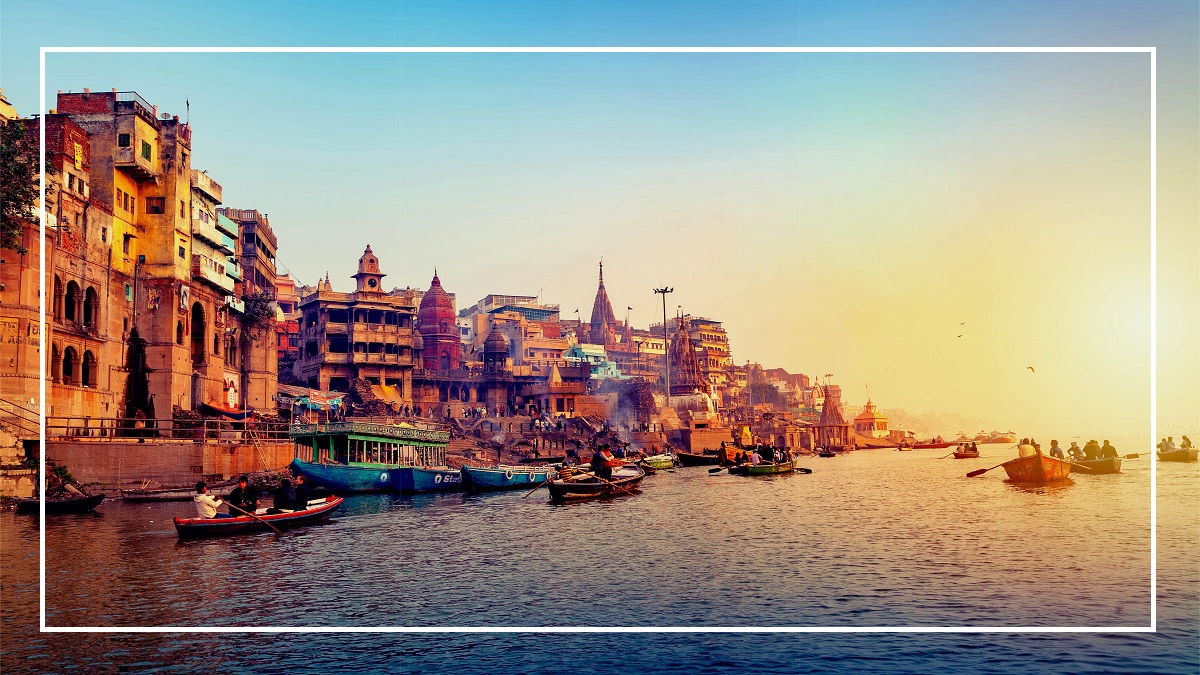At the heart of Varanasi’s Godaulia intersection stands the Kashi Vishwanath Temple, with a statue of Nandi, the bull, facing towards the abode of Lord Shiva.
This ancient tradition of Nandi pointing in the direction of Lord Shiva’s residence has been maintained for centuries.
Behind Nandi, on a large screen, a cola company’s advertisement is pulling people’s attention, trying to attract them with its sparkling lights.
Varanasi’s Blend of Tradition and Modernity
The city of Varanasi, also known as Banaras, has a history as old as time, rich in traditions and ancient stories.
While Varanasi is famous for its temples, ghats, and the search for spiritual liberation, it is evolving with a mix of tradition and modernity.
The government has placed Varanasi as a focal point for promoting religious tourism.
PM Modi’s Mention of Cultural Awakening
Prime Minister Narendra Modi, in his recent “Mann Ki Baat” address, highlighted the recent increase in the number of tourists
visiting Varanasi, indicating a “cultural awakening” in the city.
Rising Tourist Footfall in Varanasi
According to official data from the Uttar Pradesh Tourism Department, Varanasi witnessed a significant increase in tourist arrivals compared to before the COVID-19 pandemic.
In 2019, the city hosted around 6.8 million tourists, and in 2022, this number rose to approximately 72 million.
This remarkable growth signifies that within just one month of 2022, the numbers surpassed the entire year of 2019.
However, the figures were much lower in 2020 due to the pandemic.
Kashi Vishwanath Gali: A Magnet for Tourists
Many attribute the substantial increase in tourist numbers to the rejuvenation of Kashi Vishwanath Gali,
which is home to Ganga cruises, famous aartis (religious rituals), and the art of centuries-old weaving.
These attractions have captivated tourists, preserving Varanasi’s traditions.
CEO of Kashi Vishwanath Temple Trust’s Insights
The CEO of Kashi Vishwanath Temple Trust, Sunil Varma, stated that since the inauguration of the Gali in December 2021,
about 100 million tourists have visited the temple to witness Lord Shiva’s blessings.
The expansive Gali, covering five lakh square feet, has contributed significantly to the city’s tourism growth.
A Transformative Experience
Tourists patiently wait in long lines outside the temple, eagerly awaiting their turn to enter and catch a glimpse of Lord Shiva.
The chants of “Har Har Mahadev” from the devotees waiting in line resonate with energy and devotion.
Seasonal Trends in Tourist Visits
During the month of Sawan (July-August), the number of tourists visiting the temple increases even more,
reaching up to two million, compared to the regular daily visitors of around 1.5 to 2 lakh.
Varanasi’s Appeal and Positive Changes
Tourists find the new Gali has added charm to the city, drawing them closer to the banks of the holy Ganges in the eastern part of Uttar Pradesh.
A tourist from Gujarat, Sanjay Modi, noted the improved facilities and accessibility for darshan (worship) and stay.
A Call to Visit Kashi
A student from Banaras Hindu University, Satyam Srivastav, emphasized that the modernization of ghats and the temple’s redevelopment have significantly contributed to the surge in tourist arrivals.
He urged every Hindu to visit Kashi at least once.
Contributions of Cultural Enrichment
Abhishek Goyal, Deputy Chairman of Varanasi Development Authority, described the administration’s efforts to boost the city’s economic capacity through tourism.
The authorities have been monitoring tour operators, hotels, and businesses, observing significant improvements in their economic stability.
Enhancing India’s Cultural Prosperity
Goyal emphasized that enriching the nation culturally is a fundamental aspect of the government’s ideology.
Varanasi’s Evolution and Economic Impact
Abhishek Goyal mentioned that the changes in people’s income have been noticeable,
but a comprehensive assessment of the local economy’s transformation will require time.
